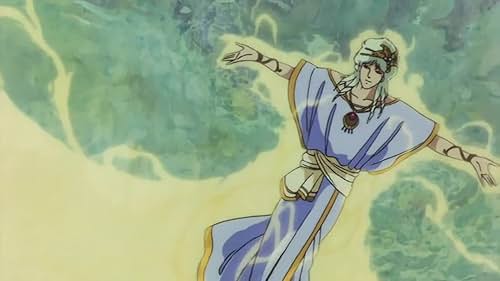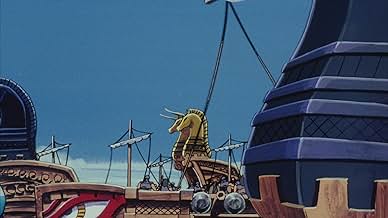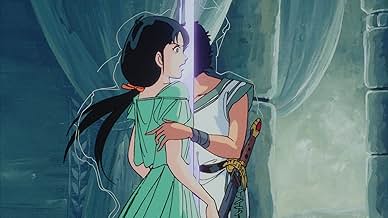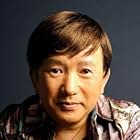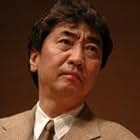ARION (1986) is a spectacular two-hour animated feature from Japan that takes as its grandiose subject the war between gods and men in ancient Greece. Its title character is a teenaged boy whose origins are clouded in mystery and who undertakes to upset the reigning order of the gods at a time when Zeus and Poseidon are locked in a bloody power struggle. Taken from his mother, Demeter, as a child, Arion is raised by Hades, the god of the netherworld, who wants him to wage war on Zeus. The boy's true past is eventually revealed, along with the destiny that was mapped out for him long before he was born. He finds a mute girl, Lesphina, a counterpart with an equally mysterious past and hidden powers of her own, whom he feels a common bond with and spends much of the film trying to rescue from Apollo, who covets her.
The plotline is incredibly demanding and takes the viewers on some mystifying detours through a barely recognizable revision of Greek mythology. The gods were supposed to be immortal yet Arion kills three of them with relative ease. Many familiar names from the myths are on hand, either as characters or references, including Chronos, Uranus, Gaia, Prometheus, Pandora, Ares and Athena. There are many dream sequences and travels on an astral plane, using a maze of abstract backgrounds and techniques. By the time we get to the climax, it becomes clear that this is all about that epochal moment in our civilization's past when men wrested control of their destiny away from the gods.
There are a handful of elaborate battle sequences, involving thousands of participants and all manner of weapons. One such scene shows the forces of Poseidon, including fish men, dog warriors and winged reptile men, clashing head on with the forces commanded by Ares and Athena. A later battle shows a rally of ordinary mortals, guided by Arion, armed with the gods' own weapon, a solar-powered cannon left to them by Prometheus for the purpose of attacking Mount Olympus itself.
The animation is consistently stunning and as fluid as one is ever likely to get from Japanese animators, with constant movement and a steady stream of action-packed confrontations, as well as subjective sequences showing nightmares and flashbacks during the hero's altered states of mind. The artwork is beautiful and recreates in vivid terms an ancient world and its myriad characters, ranging from gods to humans to beasts and all manner of hybrids, including Arion's giant, three-eyed protector, Geedo. The character design is also sharply rendered, with each character well-etched and infused with a set of distinct emotions. The director is Yoshikazu Yasuhiko, who served as animation director and character designer on the original MOBILE SUIT GUNDAM (1979) and directed in his own right CRUSHER JOE (1983) and VENUS WARS (1989). He's also an accomplished manga artist whose series, "Rebel Sword," was published in English by Dark Horse Comics.
Another important contributor is composer Jo Hisaishi who provides a masterful, evocative score that easily ranks with his better-known scores for animator Hayao Miyazaki (CASTLE IN THE SKY, MY NEIGHBOR TOTORO, KIKI'S DELIVERY SERVICE, PRINCESS MONONOKE) and live-action star/director Takeshi Kitano (SONATINE, HANA-BI, KIKUJIRO, BROTHER).
ARION is one of many celebrated anime features with a strong underground reputation that have yet to be released in the U.S. (as of this writing). It would most benefit from a theatrical release where it could be seen in all its glory on the big screen.

